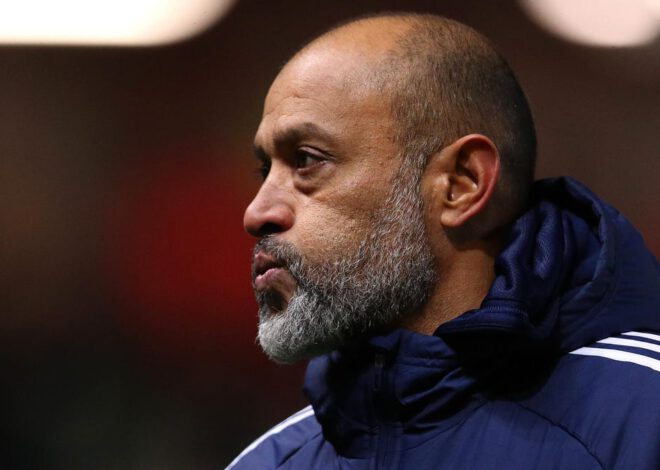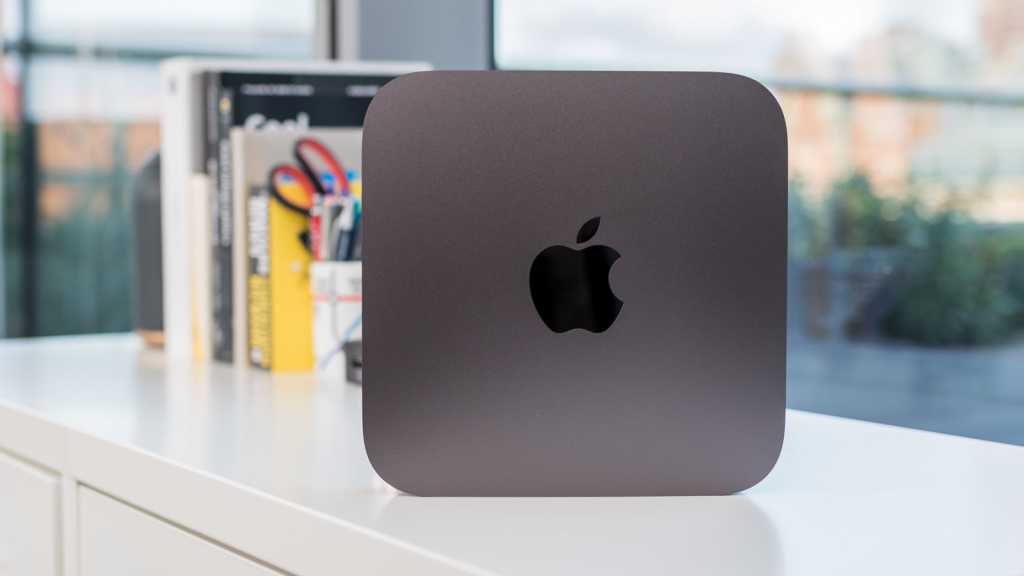
Mac mini 2018 Review: Powerful & Pricey
[If you want to read about the 2020 Mac mini read our
Mac mini M1 review.]
The last time Apple updated the Mac mini was 16 October 2014. That was the year Apple launched the iPhone 6 and iPhone 6 Plus, unveiled the first Apple Watch, introduced Apple Pay, and forced customers to download a U2 album. You may also remember that a number of celebrities had their iCloud accounts hacked and their personal photos leaked, everyone was taking part in the ice bucket challenge, and Scotland voted to stay in the UK in their independence referendum.
A lot can change in four years but the Mac mini stood still. In fact, the Mac mini was so neglected it looked certain that Apple would remove it from the line-up. Then, back in 2017, in an email to a customer, Apple CEO Tim Cook confirmed that the Mac mini would be “an important part of our product line going forward”.
Cook revealed that “Our customers have found so many creative and interesting uses for Mac mini” and Apple reiterated that when it unveiled the 2018 Mac mini (it went on sale on 7 November 2018).
When the Mac mini first launched back in 2005 it was an entry-level, budget machine that became a popular choice for ‘switchers’ (Windows users moving to Mac). Over the years it became favoured as a media centre (before everyone had Netflix built into their TV), as a server, and as the cheapest means of owning a Mac. But, it turns out, software developers and other pro users love it too, and the Mac mini has also found a place in studios and data centres. All this added up to a good reason for Apple to update the Mac mini. At last.
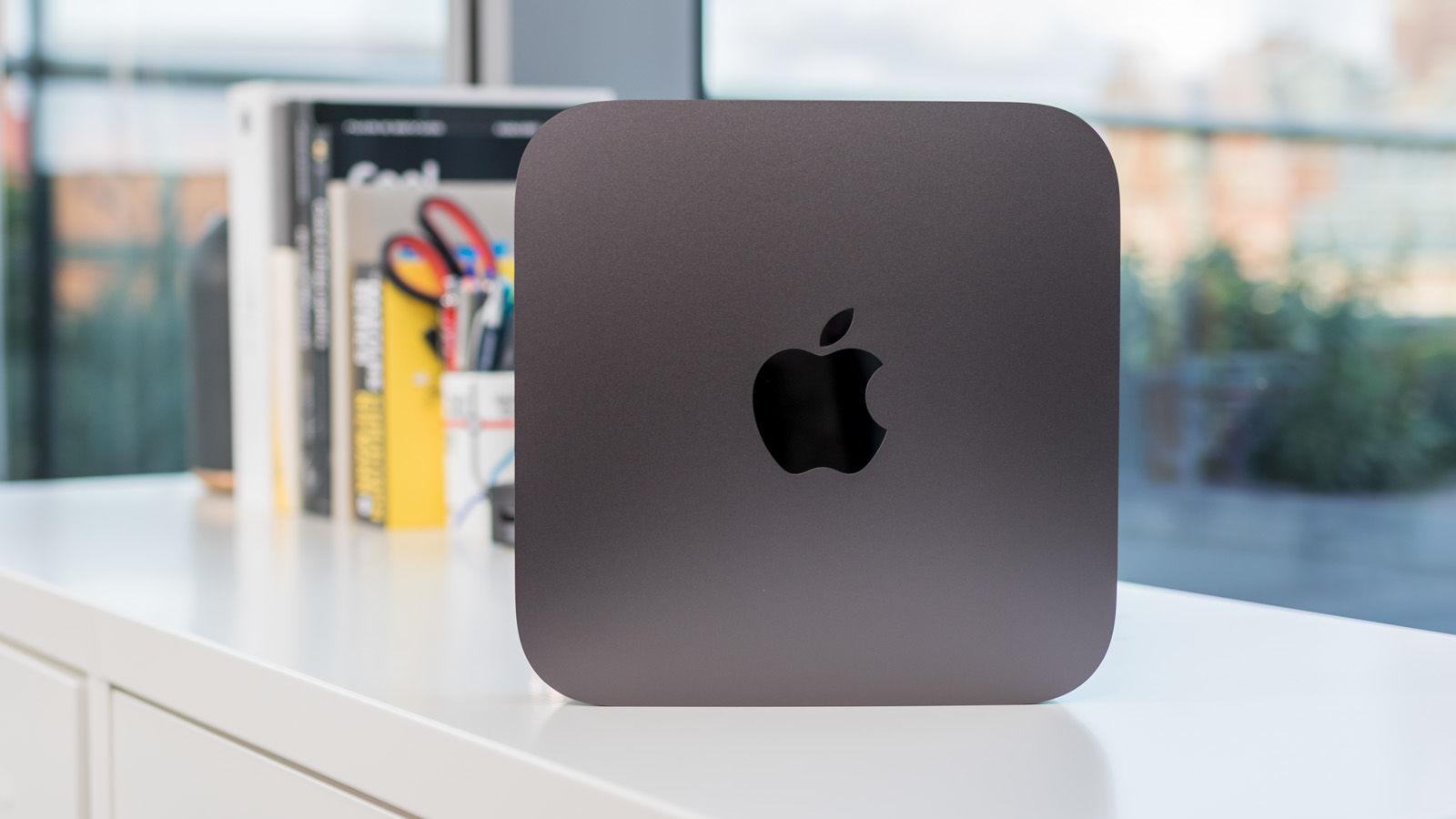
Price
The 2018 Mac mini is still an attractive entry-level Mac with a low price, although starting at £799/$799 it’s not as budget-friendly as the 2014 model that started at £399/$499. It’s somewhat disappointing that the Mac mini doesn’t come in at under £500, but let’s face it, today’s prices are higher all round.
At £799/$799 the Mac mini, with its 3.6GHz quad-core Core i3 processor, is a good deal because you won’t get a cheaper Mac than that.
There are two standard Mac mini models available and even the higher-specced version costs less than the MacBook Air and the same as the entry-level 2.3GHz dual-core iMac at £1,099/$1,099. (For a direct comparison, see
iMac vs Mac mini.) That gets you a 3.0GHz 6-core Core i5 processor, with Turbo Boost up to 4.1GHz.
There are various build to order options too. You could spec out your machine with a 3.2GHz 6-core Core i7 processor (Turbo Boost up to 4.6GHz) (+£150/$200), 64GB RAM (+£1,260/$1,400), 2TB storage (+£1,260/$1,400), 10 Gigabit Ethernet (£90/$100) for a cool £3,859/$4,199. That’s less than the entry-level iMac Pro (£4,899) if you want some perspective.
Here’s the Mac mini line up:
- 3.6GHz quad-core Core i3,
£799/$799 - 3.0GHz 6-core Core i5 with 4.1GHz turbo boost,
£1,099/$1,099 - 3.2GHz 6-core Core i7 with 4.6GHz turbo boost (+£150/$150) BTO.
It’s that latter, built-to-order unit we have on review. Our colleagues at Macworld US reviewed the entry-level model so we can include benchmarks for both models for a good overall impression of the line-up.
Wondering how the 2018 MacBook Air and Mac mini compare? Find out here.
And read about the
changes that could come to the Mac mini in 2019/2020 here.
Design & Build
At the same time as Apple introduced the new Mac mini it also introduced a redesigned MacBook Air. If you were hoping that the Mac mini had also been substantially redesigned you will be disappointed. We have no doubt that Apple could have reduced the footprint of the device, but it chose not to.
Probably the biggest reason why Apple didn’t reduce the size was the fact that there are data centres who have made a huge investment in the Mac mini and changing its size would cause problems for them.
Keeping the size as it was also allowed Apple to update the cooling system. There is now a bigger fan and bigger vents. Apple says airflow inside the new Mac mini has doubled. The Mac mini still runs exceptionally quiet.
The design is subtly different though. It is now Space Grey rather than Silver and it’s built from recycled aluminium. The Mac mini’s new colour could indicate its pro-oriented status – the iMac Pro also comes in Space Grey. Of course the new MacBook Air also offers a Space Grey option, so maybe not.
Either way, it looks great.
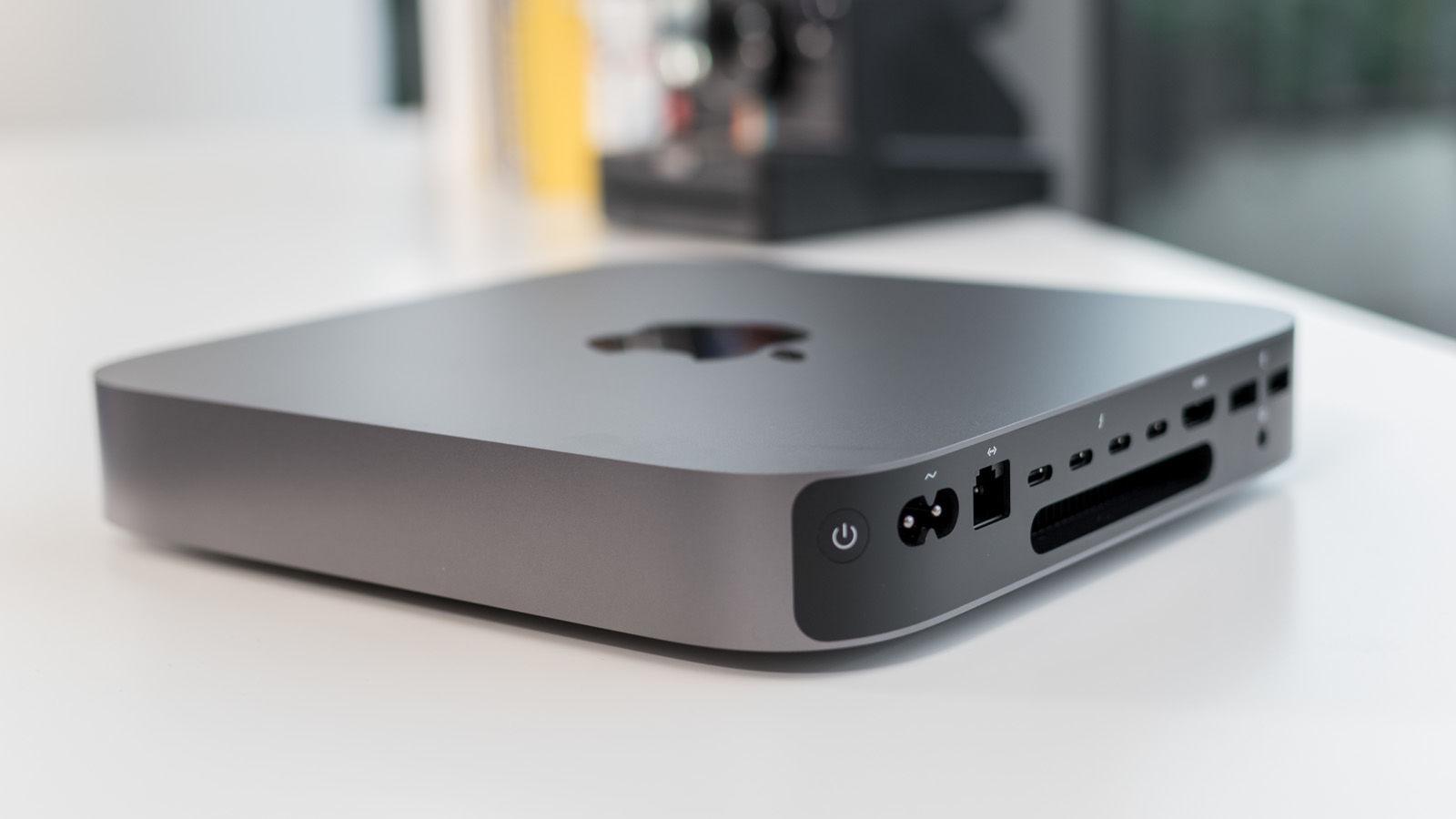
Specs
When Apple announced the new Mac mini it claimed it’s five times faster than the previous one. We certainly hope that is the case given the four-year gap. However it is more than that. For starters, the 2018 Mac mini has gained 8th-generation Intel CPUs, these processors are desktop standard as we will discuss below. Back in 2014 the processor was a U-series which (like Y-processors) are normally found in laptops or low-power desktops.
The new units also ship only with flash memory (aka SSD) – there are no more hard drive or Fusion drive options available. This will also speed things up.
Here’s a run through of the specs on the standard machines and the build to order options.
- 3.6GHz quad-core Core i3, 128GB, 8GB RAM
- 3.0GHz 6-core Core i5 with 4.1GHz turbo boost, 250GB, 8GB RAM
BTO options:
- 3.2GHz 6-core Core i7 with 4.6GHz turbo boost
- 16GB RAM
- 32B RAM
- 64GB RAM
- 512GB SSD
- 1TB SSD
- 2TB SSD
- 10 Gigabit Ethernet
Processor
Getting rid of the hard drive means Apple can fit a better processor inside the chassis (it probably could have enabled Apple to shrink the chassis too, but as we mentioned that wasn’t a requirement).
The 3.6GHz Core i3 quad-core processor in the £799/$799 Mac mini compares very favourably to the chip in the previous mini, with two more processing cores. The one thing it lacks is Turbo Boost, which would boost the processor speed when needed, as is the case with the other standard Mac mini.
The £1,099/$1,099 Mac mini has a 3.0GHz 6-core Core i5 processor. That’s two more cores again, so six processors running at 3GHz compared to four at 3.6GHz. This will benefit you most if you run mainly multi-core apps. This processor offers Turbo Boost so it go to 4.1GHz.
You can also choose a 3.2GHz Core i7 processor at point of purchase. This option is £270/$300 more. Only the Core i7 chip is Hyper-Threading enabled and it also offers a Turbo Boost to 4.6GHz. With this option you could get a pretty powerful Mac for just £1,069.
Storage
One of the biggest changes to the Mac mini is the fact that there are no longer any hard drive or Fusion Drive options. Now there are only solid-state drives. The good news is that this is great for speed, the only negative is that hard drives are cheaper per GB, so you will pay more for less space.
The other factor worth noting in terms of SSDs is that more storage usually means better performance and faster write speeds. So you can expect a computer with a 1TB drive to be faster than one with a 128GB drive. That is something to consider if you are considering whether to upgrade the storage in your Mac mini.
We’d suggest that the 128GB storage in the entry-level model is unlikely to be enough – unless you pay the
monthly fee for iCloud Drive storage, or have an external drive that you work from. You can upgrade the entry-level model at point of purchase to 256GB (+£180/$200) or 512GB (+£360/$400).
If you need more storage than that you need to choose the £1,099/$1,099 model, which ships as standard with 256GB storage but can be updated to 1TB (+£540/$600) and 2TB (+£1,260/$1,400).
You’ll need to make any storage upgrade at point of purchase as the storage is soldered to the logic board so you won’t be able to update it later on. Alternatively, just plug in an external drive – Thunderbolt 3 storage could be faster than the built-in storage.
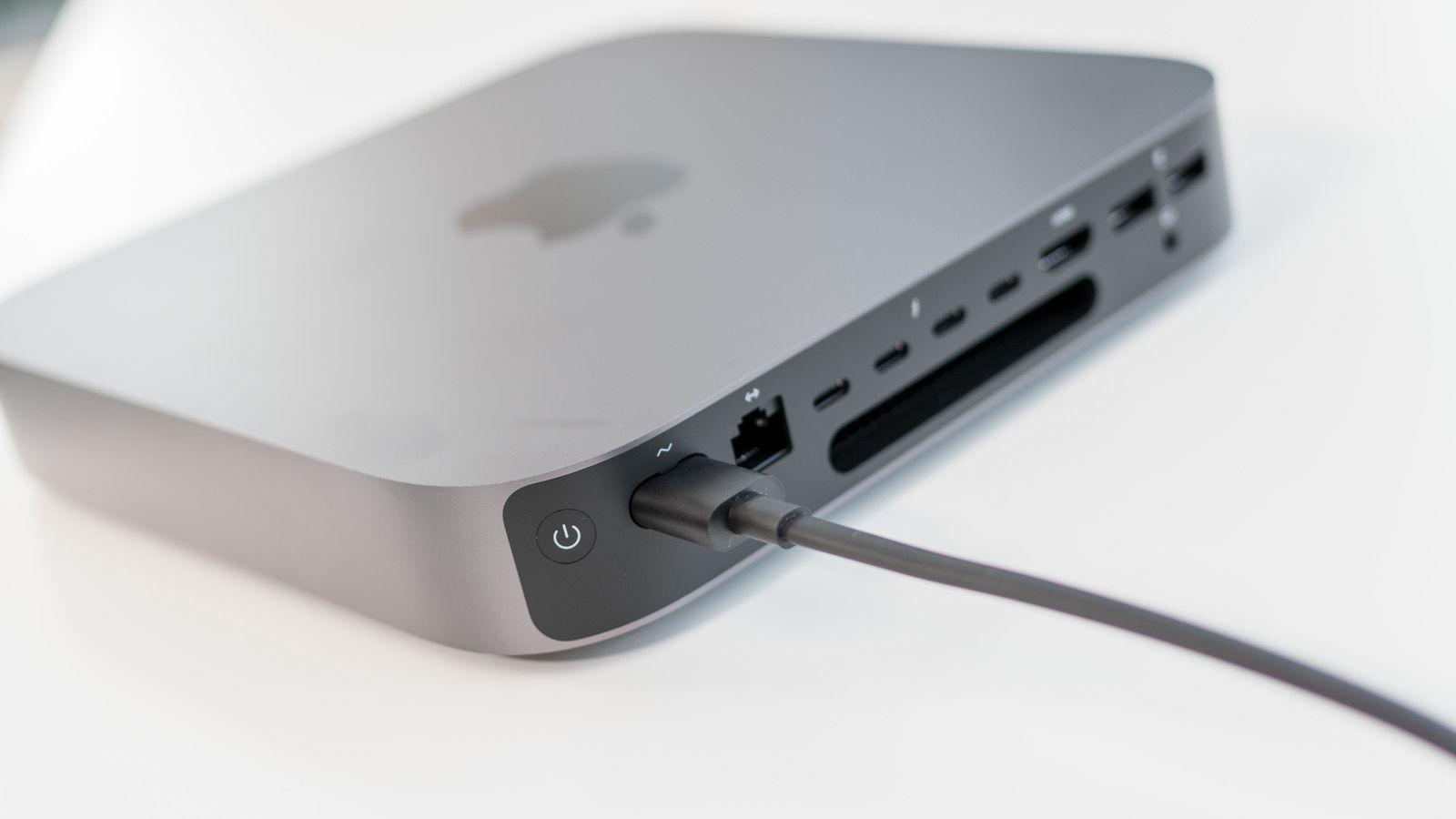
Graphics
If you are a creative professional, a gamer, or someone who uses graphics intensive apps, you’ll be disappointed to learn that the Mac mini lacks a discrete GPU.
The Mac mini comes with the Intel UHD Graphics 630. While this will be a leap compared to the graphics in the old Mac mini, in comparison to any Mac with a discrete card this will be a disadvantage. Whether this matters to you depends on whether you need a powerful GPU – and a lot of Mac mini users probably don’t.
If you do need a decent graphics card you might like to consider buying a Thunderbolt 3 eGPU. Apple sells two Blackmagic eGPUs:
- Radeon RX Vega 56 graphics processor with 8GB of HBM2 memory,
£1,199/$1,199 - Radeon Pro 580 graphics processor with 8GB of GDDR5 memory,
£599/$699
If you want to get an idea of the difference one of these cards could make, take a look at our benchmarks below where you will find the test we ran with the £599/$699 Blackmagic unit and the 13in MacBook Pro.
Benchmarks
Apple loaned us a high-specced Mac mini, while our colleagues at Macworld US were loaned the entry-level machine. Therefore we are in a good position to give you an overview of the benchmarks for both models.
There are a few interesting things to note from the below benchmarks. We’ll start with the processor benchmarks, for which we use Geekbench 4.1.
We’ll start off with multi-core test, where, as you can see, the Mac mini we tested beat the 15in 2.9GHz six-core MacBook Pro – not so surprising when you consider that our Mac mini has a 3.2GHz six-core processor. What’s interesting is that a Mac mini with the 3.2GHz processor starts at £1,069/$1,099, while you’d have to pay around £3,000/$3,000 for a 15in MacBook Pro with a 2.9GHz six-core processor.
Note also that even the entry-level Mac mini is as fast as the 2017 3.4GHz quad-core Core i5 iMac. So you have a choice between spending £1,449/$1,449 on a 21.5in iMac, or you could spend £799/$799 on a Mac mini and use the remaining £650/$650 for a 4K display and spec up the mini with build-to-order options.
If you are mainly using apps like mail, Safari, iTunes and so on then chances are you won’t benefit much from the multiple cores. In that case you will be more interested in the single-core benchmark.
Again the 3.2GHz Mac mini performs well. It’s interesting to note that the 3.6GHz entry-level model comes in below it despite being ‘faster’ – we assume that the difference is attributed to the fact that the 3.6GHz Mac mini lacks Turbo Boost.
When it comes to graphics the fact that the Mac mini lacks a discrete GPU lets it down, as you can see from our Cinebench OpenGL test. We have tested a MacBook Pro with a eGPU and found that it makes a remarkable difference though, as you can see from our Unigene Valley test, so we’d expect to see the same with the Mac mini.
Upgradability
One of the criticisms of the 2014 Mac mini was its lack of upgradability. Two years prior, the 2012 Mac mini was easy to upgrade, one of the biggest benefits of that model. But the 2014 model had its memory soldered into place so there was no way to upgrade it other than at point of sale.
The good news is the plastic bottom still comes off easily and you can unscrew the hatch. Beyond that, gaining access to the components is probably not straightforward enough for home upgrades, but it can be done. The RAM is upgradable because this time round it isn’t soldered on, it’s just a little difficult to access because it’s in a cage behind the fan and other components. If you do want to upgrade your RAM, Apple recommends that an Apple service provider does so (do it yourself and you void the warranty).
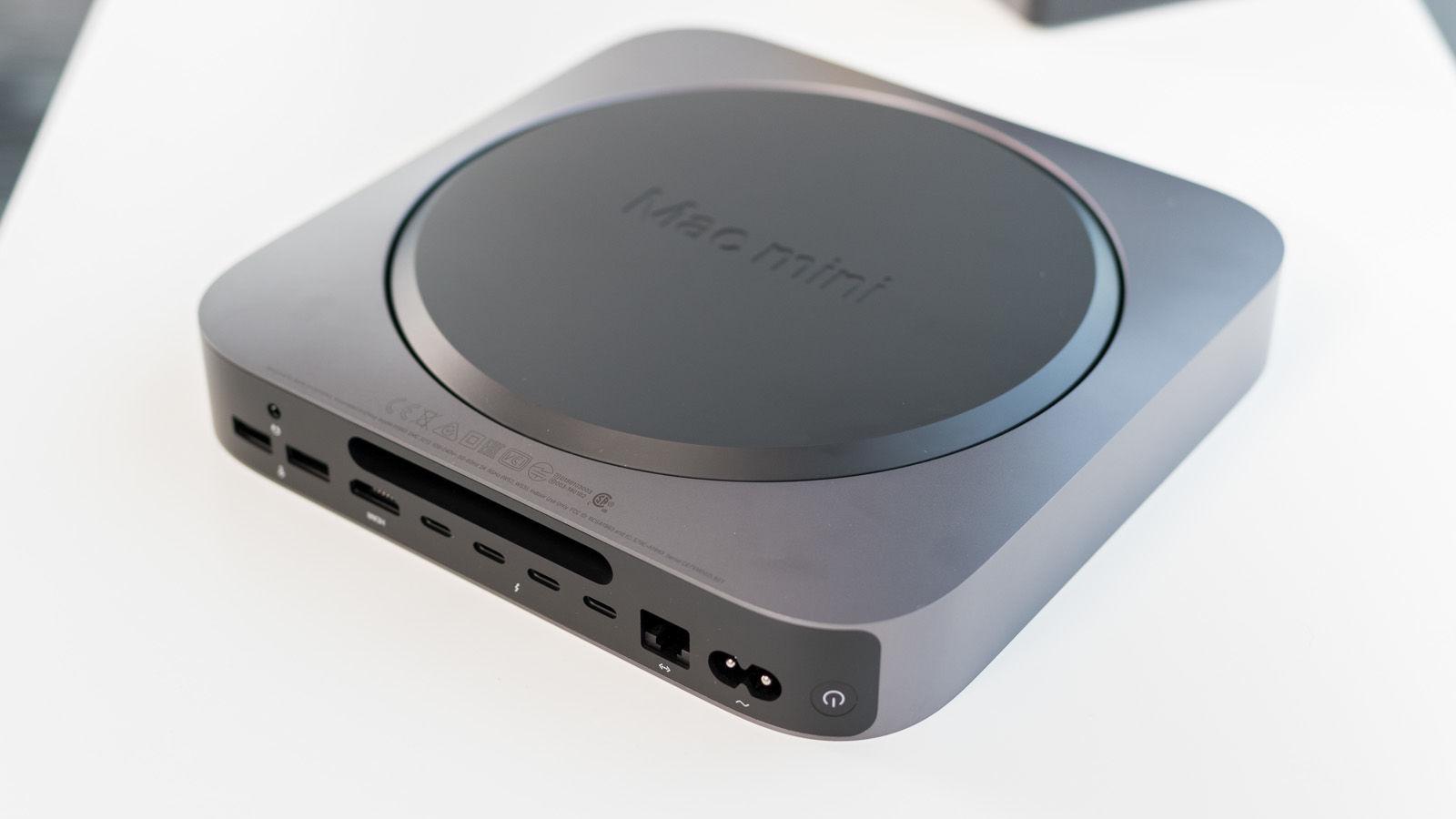
The mini supports up to 64GB RAM which will cost you £1,260/$1,400 if you buy it from Apple, so you might want to shop around. You can get 64GB RAM from Crucial for
£884.39 or
$969.99.
Ports & Peripherals
In some ways it doesn’t matter that it’s not possible to upgrade everything inside the Mac mini because, thanks to the abundance of ports, you can plug in external devices and boost your mini that way.
The good news for I/O fans is that there are two USB-3 (AKA USB-A ports on the Mac mini, so if you have older peripherals you can plug them in. The HDMI port also remains, which is great if you want to plug your Mac mini into a TV screen or monitor.
The Thunderbolt ports on the Mac mini have been updated to Thunderbolt 3/USB-C, so you can take advantage of super speedy external storage as well as the eGPUs we mentioned earlier. These ports also mean you can connect two Thunderbolt displays as well as a separate HDMI display if you want to. You’ll need an adaptor if you don’t have a USB-C/Thunderbolt display but we’ve had no trouble using this
Arktek USB-C (Thunderbolt 3) to DVI Adapter with our existing monitor.
As standard there is a Gigabit Ethernet port but this is upgradable to 10Gb Ethernet for $100/£90.
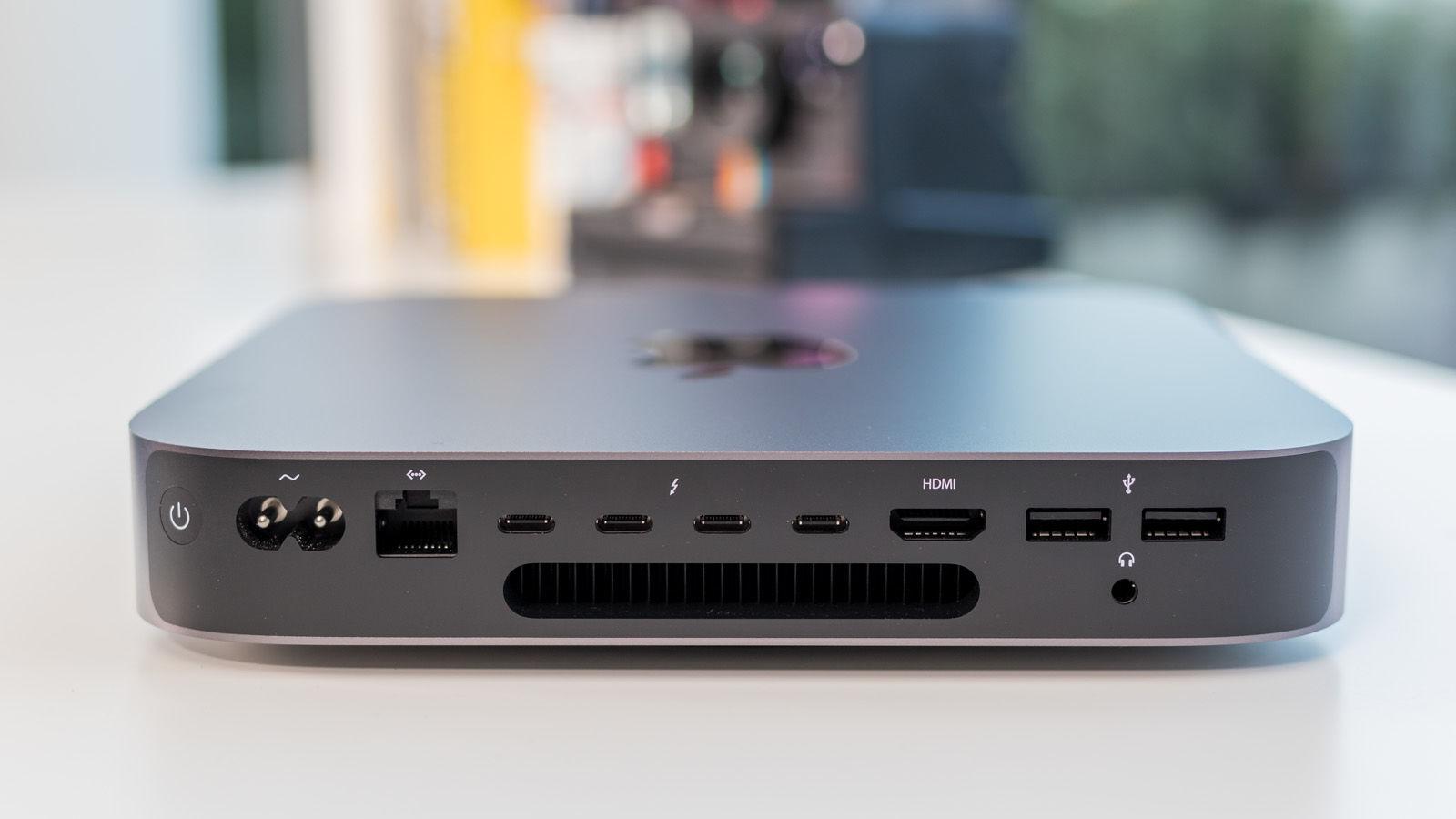
You’ll need to provide your own keyboard and mouse as these don’t ship with the Mac mini. This probably isn’t a big issue, it keeps the cost down and most people will have a keyboard and mouse lying around somewhere.
It surprises us that Apple doesn’t give shoppers the option to add a Space Grey Magic Keyboard (
£149 /
$149) and
Space Grey Magic Mouse 2 (£99/$99) to their order though. As these are an obvious choice when purchasing your Space Grey Mac mini.
Perhaps Apple will soon be updating the Magic Keyboard with Touch ID. The T2 chip that ships inside the Mac mini could deal with Touch ID related security requirements, so hopefully if a
new iMac ships with a Touch ID capable keyboard the Mac mini will be able to take advantage of that.
Software
A final word on software. If you already have a Mac then you will be well aware of the vast array of software that shipped with it.
You’ll find many of the apps you have on your iPhone or iPad, including FaceTime, Messages, Mail, and the office apps (Numbers, Pages and Keynote), plus Photos, iMovie and more. The Mac mini ships with the latest version of the Mac operating system, currently
macOS Mojave.
Verdict
While we are disappointed that it now costs more than £400/$500 to buy a Mac mini those days are long gone. Instead, for a pretty decent £799/$799 you can get your hands on a much more powerful machine than we were really expecting. And if you spend a bit more you can create a real workhorse.
The only thing the Mac mini really lacks is a discrete GPU, but if you need graphics there are eGPUs that can do the job for you. And since the Mac mini is still small there’ll be plenty of room on your desk for one of those Blackmagic units.
All in all we think that the 2018 Mac mini redefines the Mac mini. The mini has evolved from a low-cost Mac that enticed Windows users to switch into a surprisingly powerful machine that still doesn’t cost a fortune. While we wait for Apple to update the iMac, the Mac mini is the only Mac desktop worth buying.

